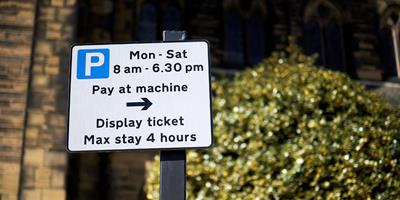
Every driver thinks they’re a good driver. But even if you’re careful, little bumps and scrapes can still happen. It could be loose stones from the road pinging up onto your car, or a ding caused by another driver's door.
Sometimes you can fix scratches or small dents yourself, and other times you may want to take your car to a garage to get it seen by a professional. Here’s how to decide the best way to fix a dent or scratch.
Can I fix the scratch myself?
It depends on the depth of the scratch[1]. Run your fingers over it. A rule of thumb is that if your fingernails do not catch, then the scratch only goes as deep as the first of three layers of paintwork on your car and you may be able to fix it yourself.
If the scratch is deeper and feels more like a ridge under your finger, then the damage is greater, and you might need to take your car to the local garage[1].
How to fix a scratch yourself
You may be able to polish out really light scratches - those you can’t even feel with your finger - using a fine cloth and some clear polish to buff the offending mark[2].
If this doesn’t work, you can sometimes fix narrow scratches using toothpaste. The whitening type is best, but you can use a standard tube if that’s all you have at home. The RAC[1] explains:
- Use warm soapy water to wash the affected area, rinse it down and then dry it with a clean, dry cloth.
- Squeeze roughly a 2p-sized amount of toothpaste onto a damp microfibre cloth.
- Rub the toothpaste into the scratch in a circular motion, applying just enough pressure to ensure it’s well distributed.
- Rinse it with soapy water to remove any excess toothpaste.
- Dry with a dry microfibre cloth.
You may need to repeat this a couple of times until the scratch disappears.
For deeper scratches, then you can buy a scratch repair product. Make sure you follow the manufacturer’s instructions when using it to ensure you don’t end up damaging your paintwork[1].
For even deeper scratches, a new lick of paint to the affected part of your car might be needed. This is a much bigger job so, if you’re not confident doing it, you may want to take it to a professional.
Fixing small dents
Fixing dents can be more of a challenge and the Honest John website describes this process as more of an art form than scratch repair[3].
However, it is possible to fix small or shallow dents at home[4]. If the dent is small and light enough, you might find you can pop it back out using a bathroom cup plunger[4], wet the plunger and the dent, and push and pull it until the dent is removed. For more pulling power, you can buy plungers that are designed specifically for the job. Halfords, for example, has a dent puller for just under £10[5].
You can also push out a shallow dent with your hands, if you can reach behind it[6]. This can work for small dents in your bumper. Being careful not to burn your hands, pour boiling water over the dent to make it temporarily more flexible[6]. Reach behind the dent and push it out to its original shape. You’ll need to act quick before the water cools and the plastic becomes rigid again.
If these techniques don’t work, or you’re not confident attempting them yourself, then you’re probably facing a bigger job, which involves filler and a new coat of paint. Again, unless you have some experience in this area, it may be time to pay a professional to fix the dent.
Should I tell my insurance provider?
You should tell your car insurance provider about all incidents you have in your car, though you don’t always have to make a claim.
Depending on your policy, the excess (the amount you pay towards a claim) could be more than paying for the work yourself[1]. If you’re not sure how much your excess is, check your car insurance documents.
Whether you put in the elbow grease yourself or get help from a professional, removing those unsightly scrapes will help get your car back to its former glory.
No £25 admin fee
When you update your policy online, e.g. amend driver, address or car details.


